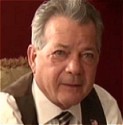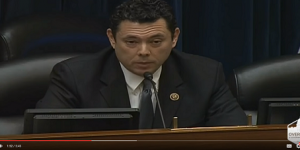Illegal immigrants are packing 50 lbs of drugs as they cross the Southern Border and Border Patrol enforcers play a daily cat and mouse game to try and stop them.
“It doesn’t matter who you are. The country is rough and hard on people when you’re out there on foot. And that’s what we do when we’re out there tracking and looking for people who have crossed the border illegally,” says U.S. Border Patrol Agent Rush Carter.
Agents spend hours scouring surveillence video looking for signs illegal immigrant drug mules have crossed the arid border region.
“Agents will track, depending on where they are and what they’re doing, three to five miles and then end up having to walk back to get back to their vehicle. It could be anywhere from a mile to 10 in a day.”
An agent like Rueben Leyva could spend an entire shift staring at the two monitors in a mobile surveillance truck in the middle of a cattle ranch.
“I could just sit here and pan my camera back and forth and this will let me know if there’s a group, animal and I could get in that area, zoom in day or night,” says Leyva.
Agents looks for what they call “sign.” It could be footprints on dirt roads, disturbed vegetation or kicked over rocks.
“As we move up here, there’s other sign, ways you can tell are these kicked over rocks. When there’s no place really to leave a footprint, people walking at night tend to kick over more rocks, because you really can’t see where you’re walking.”
“So you can see this piece of brush here, it’s been stepped on, and you can see the green color here so you know it’s fresh. If that would’ve been mashed over and it had sat out in the sun for a week it would be all dried up and dead. But that shows you it’s a fresh break on that branch and so it gives you a time frame of how far behind you are from somebody and that you’re on the right trail if this is all you’re looking at, kicked rocks, broken brush.”
Yet, even as the agents learn the signs which mark illegal immigrant activity, the illegals change tactics.
“This particular group is using a tactic that we started to see frequently here and that’s gluing pieces of carpet on the bottom of their shoe and so that takes away that grid pattern that you see on the bottom of tennis shoes or hiking shoes and makes it difficult for us to distinguish that that’s a footprint on the ground.”
Agents have to cover half a million square miles searching for these needles in a haystack. That’s why having more eyes and ears along the border would be a big help.




























